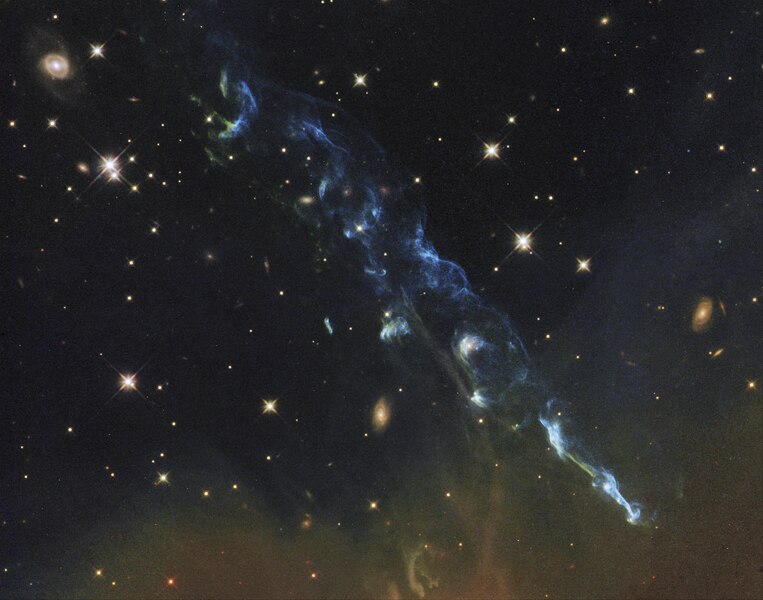Ficheiro:Herbig-Haro 110 (captured by the Hubble Space Telescope).tif

Tamaño desta vista previa en JPG do ficheiro en formato TIF: 763 × 600 píxeles. Outras resolucións: 305 × 240 píxeles | 611 × 480 píxeles | 977 × 768 píxeles | 1.280 × 1.006 píxeles | 2.560 × 2.012 píxeles | 3.883 × 3.052 píxeles.
Ficheiro orixinal (3.883 × 3.052 píxeles; tamaño do ficheiro: 26,63 MB; tipo MIME: image/tiff)
Historial do ficheiro
Prema nunha data/hora para ver o ficheiro tal e como estaba nese momento.
| Data/Hora | Miniatura | Dimensións | Usuario | Comentario | |
|---|---|---|---|---|---|
| actual | 8 de xullo de 2012 ás 11:53 |  | 3.883 × 3.052 (26,63 MB) | Prof. Professorson | {{Information |Description=en:Herbig-Haro 110 is a geyser of hot gas from a newborn star that splashes up against and ricochets off the dense core of a cloud of molecular hydrogen. Although the plumes of gas look like whiffs of smoke, they are ac... |
Uso do ficheiro
A seguinte páxina usa este ficheiro:
Uso global do ficheiro
Os seguintes wikis empregan esta imaxe:
- Uso en en.wikipedia.org
- Uso en en.wiktionary.org
- Uso en fa.wikipedia.org
- Uso en pl.wikipedia.org
- Uso en tr.wikipedia.org
- Uso en zh.wikipedia.org
